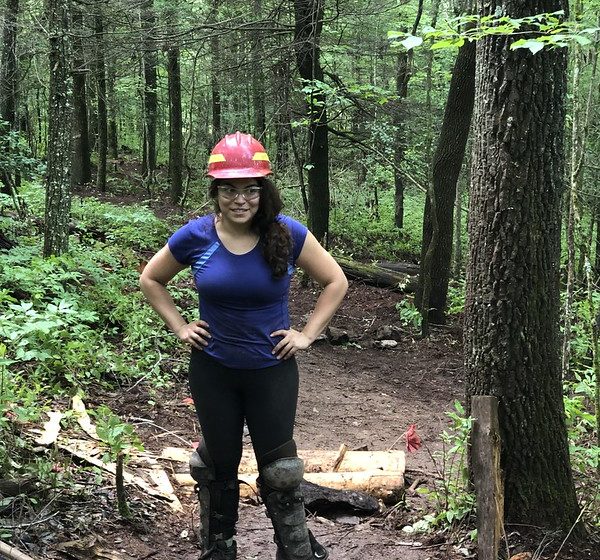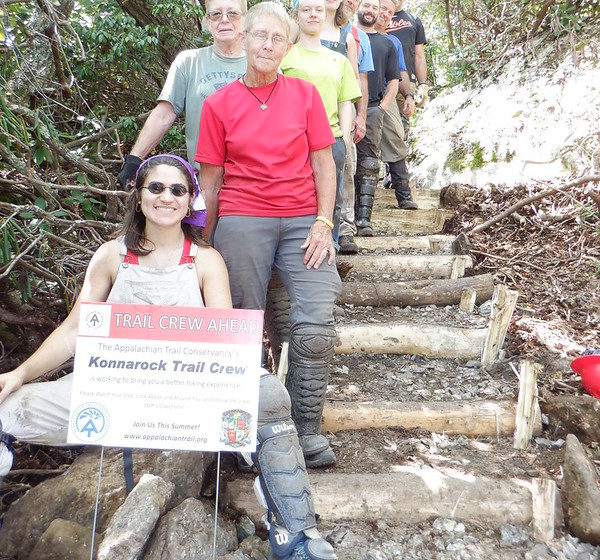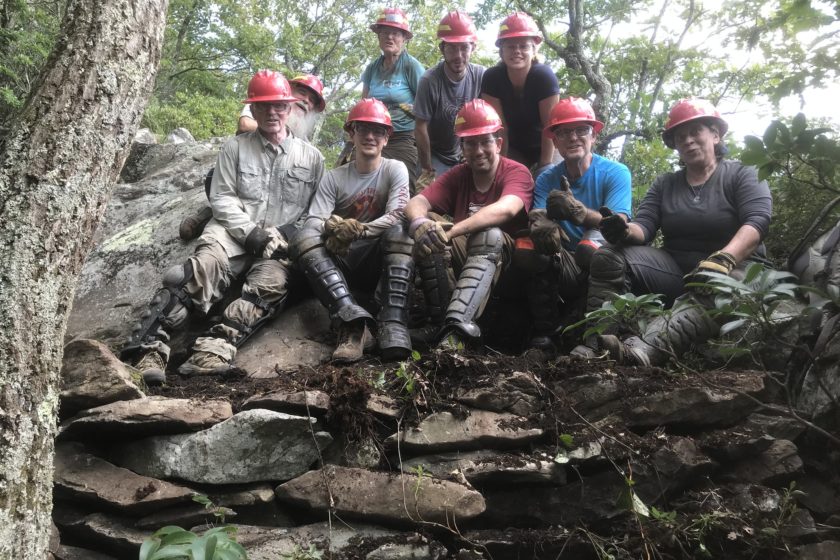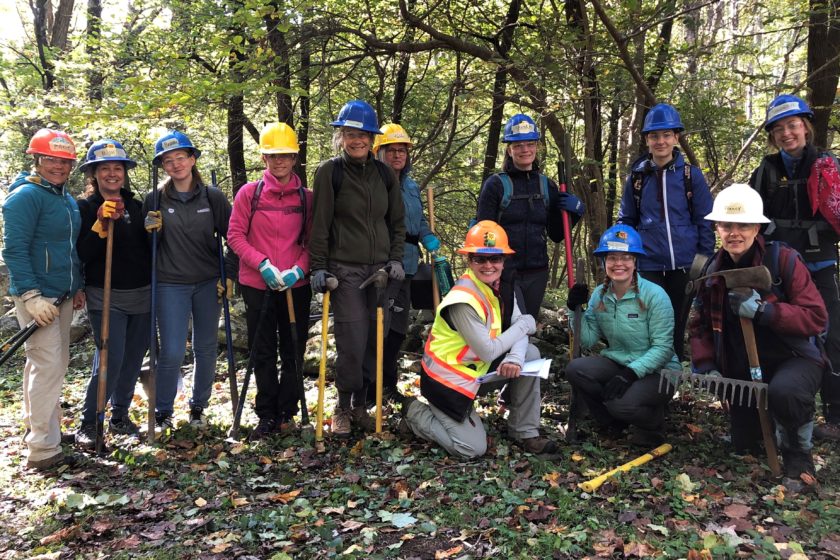by ATC National Stewardship Coordinator Alivia Acosta
Picture Perfect
It’s a hot summer’s day, the trail ahead of you is long but you and your friends are enjoying the climb. The slope isn’t unbearable and you’re gaining elevation. Leading from the back of the group, as you ascend up the mountainside traversing over a large stone staircase, you hear one of your friends ask, “How on earth did someone find this beautiful rock staircase in the middle of the woods?!”
Sound familiar? You can’t blame your friend though, they barely ever hike and a trail is simply a path in the woods for them. But for a nature lover and a stewardship advocate like you, you know that their innocent yet profound comment is an ode to the beauty of trail work. We know the ultimate goal of any trail project is to make it seem as though you were never there.
Here are a few tips and tricks on how to capture the story of any trail project:
Faces not backsides: The most appealing photos of volunteers at work show them with smiling faces. Consider possibly taking a moment to briefly pause the work in progress and have participants pose for a picture or two.
Proper Personal Protective Equipment: Viable pictures exhibit proper trail work safety standards. Personal Protective Equipment (PPE) is essential to this component. There are varying degrees of safety standards. In general, the minimum safety equipment needed when working with tools on the A.T. includes work gloves, hard hats, and safety glasses.
Action shots v.s group shots: Sometimes action shots aren’t in the cards. Taking pictures of the group before the event, after the event, or maybe while they’re taking a break to grab a bite to eat or a drink of water are also great ways of capturing the day’s activities if needed.
Before and after pictures: Before and after pictures can really put the work accomplished into perspective. It is always rewarding to have these images, as well as group pictures, sent to participating volunteers after the work trip as a form of thanks and appreciation.
Finding the ideal camera setting: Finding the right balance between your camera’s aperture, shutter speed, and sensitivity is crucial to capturing a quality image. For example, you might want to have a longer shutter speed and a higher aperture when under a forest canopy in order to capture more light. Consider taking a few practice shots while on the Trail beforehand.
Pictures in landscape are best: While all pictures are great, when submitting a picture to the Appalachian Trail Conservancy for our use please keep in mind that a landscape orientation fits best with our website formatting.
Help tell the story of stewardship and share your pictures with us at volunteer@appalachiantrail.org. When you send them, be sure to include what photo credit should accompany the image and a few details on the project work and location. Submissions have the opportunity of being used by the Appalachian Trail Conservancy in highlighting stewardship along the A.T.
 sophomore year of high school she had the opportunity to enjoy the outdoors for the first time working with the non-profit organization Groundwork USA. She’s gone from learning about the Department of Interior to shaking hands with Sally Jewell; from setting up a tent for the first time to living in the northern woods of Maine constructing trails with the Appalachian Mountain Club; from visiting a state park for the first time to living and working in Yellowstone National Park with the Youth Conservation Corps. Since her start with Groundwork all of Alivia’s experiences have enabled her to enjoy working in the field of conservation. Alivia is currently serving on the Stewardship Council, working for ATC as National Stewardship Coordinator, and studying Parks and Forest Resources at Unity College in Maine with a minor in Psychology.
sophomore year of high school she had the opportunity to enjoy the outdoors for the first time working with the non-profit organization Groundwork USA. She’s gone from learning about the Department of Interior to shaking hands with Sally Jewell; from setting up a tent for the first time to living in the northern woods of Maine constructing trails with the Appalachian Mountain Club; from visiting a state park for the first time to living and working in Yellowstone National Park with the Youth Conservation Corps. Since her start with Groundwork all of Alivia’s experiences have enabled her to enjoy working in the field of conservation. Alivia is currently serving on the Stewardship Council, working for ATC as National Stewardship Coordinator, and studying Parks and Forest Resources at Unity College in Maine with a minor in Psychology.






